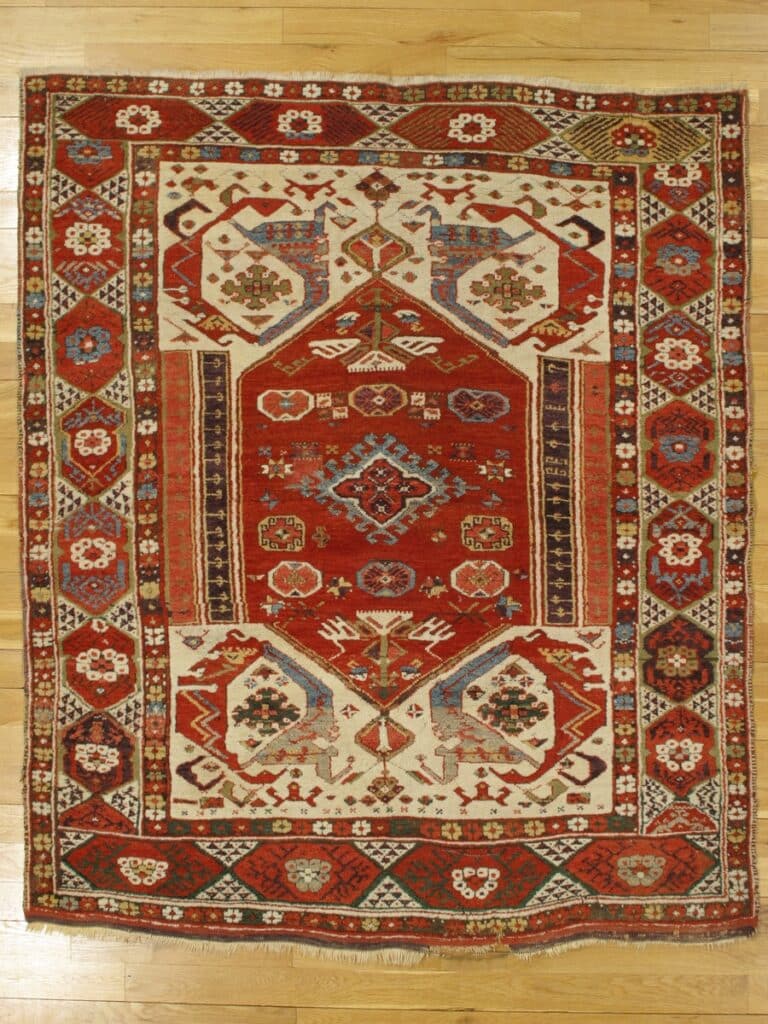Antique Anatolian rugs bring warmth, texture and an authentic touch of history to homes. They combine motifs from many cultures, which makes them versatile and fit well into both classic and contemporary decor styles.
The wool used in these rugs is special because it lasts and takes colors really well. And the natural dyes used give them their rich color palette.
They’re Made of Wool
As the center of many cultures throughout history, Anatolia left an incredible legacy in rug weaving. These rugs were traditionally hand-knotted with wool using either the symmetrical Gordes or the asymmetrical Senneh knots and were dyed with natural plant dyes that produce rich reds, blues, and earthen browns.
Nomadic tribes wove thick pile rugs to keep their families warm during the cold winter months. The oldest known hand-knotted pile rug, the Pazyryk rug, was found in a burial mound and preserved in ice, making it over 2500 years old.
Various cultural influences can be seen in these rugs as different tribal groups contributed their own traditional designs and symbols. Some of these cultures include the Byzantines, Turkic peoples, Armenians, and Caucasian people who either lived in or migrated to Anatolia at different times in history.
They’re Made of Silk
Although woven floor rugs existed long before the invention of the carpet as we know it today, knotted pile carpets did not appear until the rise of the Seljuk Turks in Anatolia in the 11th century. As a result, the art of rug weaving developed quickly, producing a variety of carpets unique to specific regions like Usak,Bergama and Konya, as well as carpets that represent different periods in Turkish history.
One such example is the Hereke carpet, which was woven for the Ottoman palaces and is characterized by its distinctive floral motifs like tulip, daisy, carnation, crocus, rose, lilac, and hyacinth. They also have a variety of foliate compositions and quarter medallions. They are also recognizable by their distinctive fringes called “elem” that protect the lower borders of tent door rugs (“ensis”). Irregularities, such as missed warps, knots over three or four warps, and single warp knots, are often found in these carpets.
They’re Made of Cotton
The designs and motifs on these carpets reflect the spiritual beliefs of the tribes that wove them. For instance, scorpions symbolize protection from malice, and black snakes symbolize fertility. They also often depict pomegranates, which are the fruit of the sacred tree that is considered immortal and full of life-enhancing seeds.
In addition to their unique fusion of geometrical patterns and historic motifs, Anatolian rugs are known for their superior quality and craftsmanship. They feature symmetrical Ghiordes knots, which are hand-tied using natural dyes, and they use a color palette that showcases earthen tones such as apricot, terracotta, and saffron, along with misty grays and deep blues.
Several rug types hail from western Anatolia, including Oushak (or Ushak) rugs, with their complex designs and warm colors; Bergama rugs, which are distinguished by their vivid reds and strong medallions; and the legendary silk Hereke carpets
They’re Made of Natural Dyes
Although the original tribal cultures that inhabited Anatolia are gone, their varying art and culture persist in the rugs they left behind. Weavers used natural dyes that were obtained from locally available plants to create the vivid hues and patterns seen in these antique rugs.
Carpet production centers in different parts of Turkey, with each area employing its own weaving and color techniques to produce a distinct rug style. Hereke rugs, for example feature floral motifs like the Seljuk Stars, seven mountain flowers, and tulips.
They’re Made of Horns
Anatolian rugs are known for their rich color palette and weaving techniques that highlight natural dyes. They also often showcase motifs and patterns that represent the cultural significance of the area.
The wolf’s mouth and monster’s feet motifs, for instance, symbolize protection from dangerous predatory animals. Humans believe that invoking these creatures – whether through mimicry or by creating similar physical forms – will protect them from harm.
Snake motifs, meanwhile, embody life force and the potential for regeneration. Despite their power, these motifs are also considered a symbol of nobility and divinity. This is a result of the shedding snake’s skin, which represents renewal and immortality.
They’re Made of Arrows
In a world where mass production is king, Anatolian Rugs are intricate works of art steeped in cultural narratives and spiritual beliefs. Their designs and motifs are deeply symbolic, and each one tells a different story.
For example, the arrow motif on an Anatolian rug symbolizes protection and perseverance. The arrow is swift and precise, and it never veers off course or loses sight of its goal. It’s a symbol of purpose and direction, and it serves as a reminder that life is full of obstacles, but they can be overcome with courage and determination.
They’re Made of Earrings
There are many different types of Turkish carpets based on region, motif, and technique. For example, rugs from Kayseri use cotton warps and wool and silk weaving threads, while those made in Konya are known for their pastel hues of yellow, red, and green on deep blue and red ground colors. The Bergama area produces rugs that feature darker colors and floral motifs.
The motifs on an Anatolian rug can communicate a lot about its maker and the history of the people who used it. Generally, though, these patterns and motifs convey universal themes like religion, nobility, and nature.
Closing Remarks
When it comes to ordering Anatolian rugs, Hagop Manoyan is a top choice. His extensive collection features a wide variety of high-quality, authentic Anatolian rugs that showcase the rich heritage and craftsmanship of Turkish rug weaving. Hagop’s expertise and dedication to preserving traditional techniques make him a trusted name in the industry.

